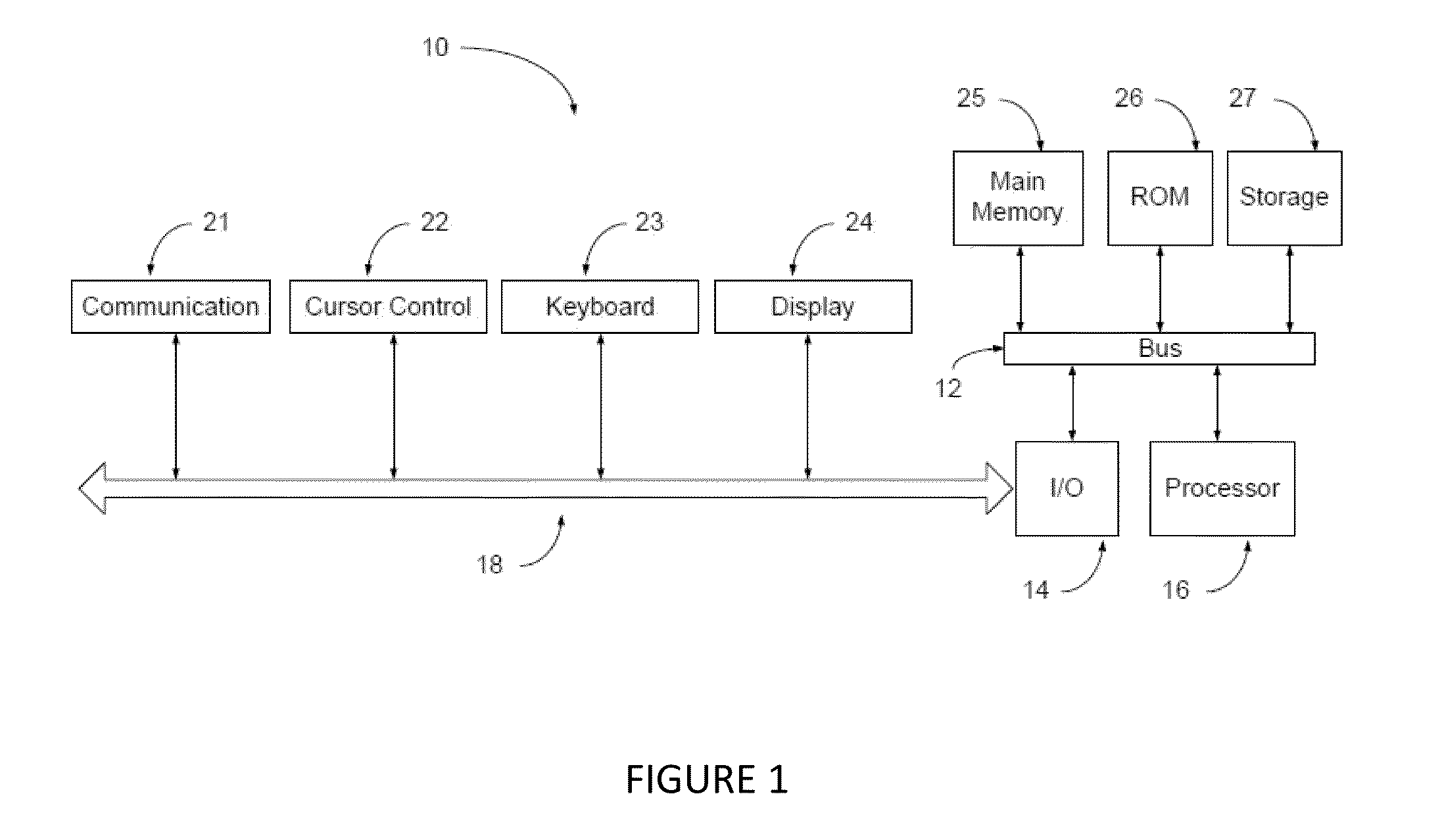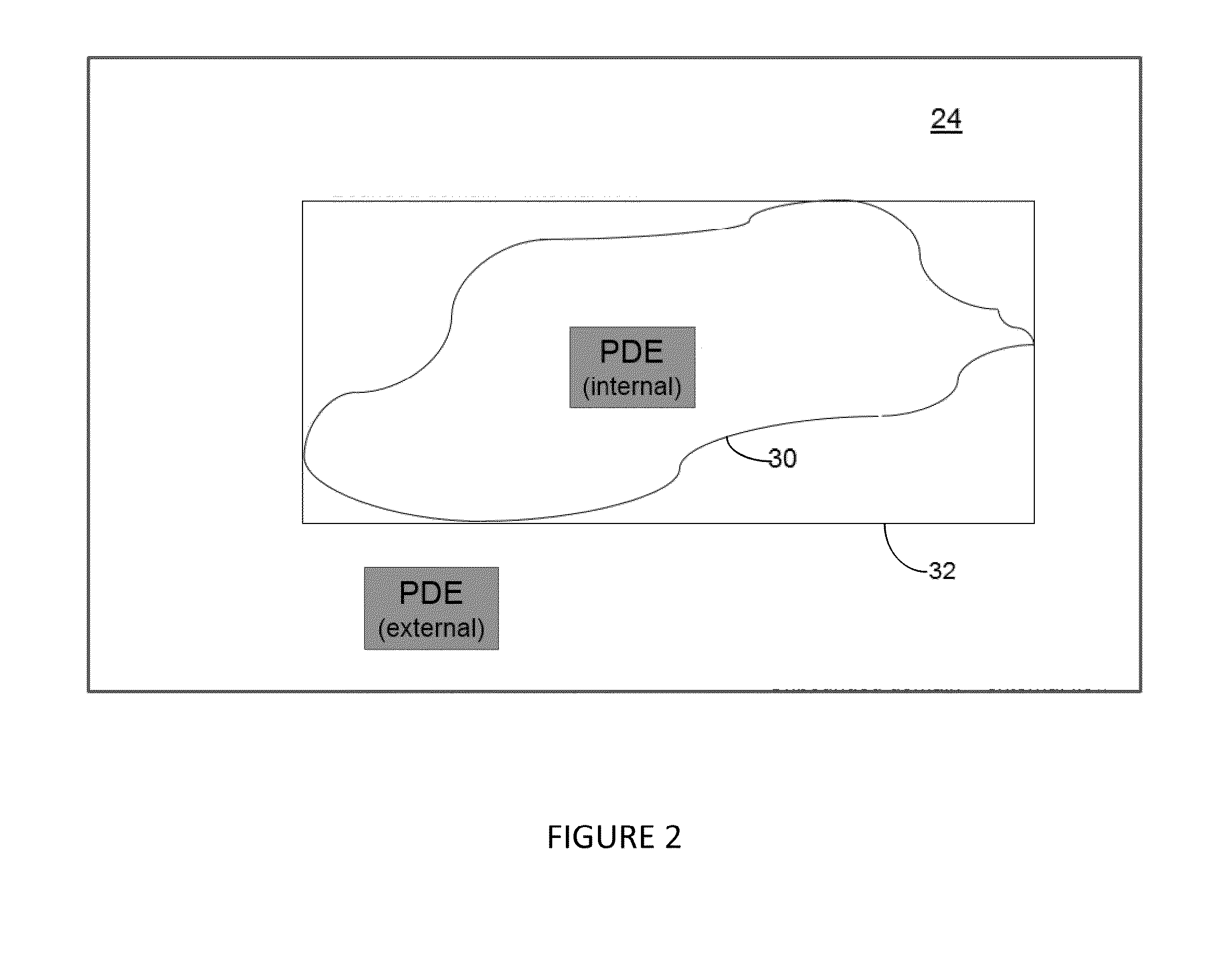System and Method for Determining Heat and Fluid Flow in or Around Objects
a technology of heat and fluid flow and system, applied in the direction of instruments, computation using non-denominational number representation, design optimisation/simulation, etc., can solve the problems of different models and algorithms, and current computer modeling schemes have proven limited in the form of objects they can model
- Summary
- Abstract
- Description
- Claims
- Application Information
AI Technical Summary
Benefits of technology
Problems solved by technology
Method used
Image
Examples
Embodiment Construction
[0072]FIG. 1 illustrates schematically a system 10 for determining or the predicted modelling of compressible and non-compressible fluids in accordance with a preferred embodiment of the invention. The system 10 includes a computer which includes main memory 25, read only memory 26, and storage memory 27. A bus 12 provides electronic communication between the main memory 25 ROM, 26 and storage memory 27, and the computer processor 16 and I / O board 14.
[0073]The I / O board 14 communicates via a suitable data connector 18 with the user operable keyboard 23, video display 24 and cursor control 22. In addition secondary communication output 21 may also be provided. The processor 16 stores computer program instructions which in operation of the system 10 are adapted to provide and output to a user a graphic and / or data output on the display 24, which simulates fluid flow dynamics through and / or around physical boundary defining target object 30 (see for example FIG. 2).
[0074]As will be des...
PUM
 Login to View More
Login to View More Abstract
Description
Claims
Application Information
 Login to View More
Login to View More - R&D
- Intellectual Property
- Life Sciences
- Materials
- Tech Scout
- Unparalleled Data Quality
- Higher Quality Content
- 60% Fewer Hallucinations
Browse by: Latest US Patents, China's latest patents, Technical Efficacy Thesaurus, Application Domain, Technology Topic, Popular Technical Reports.
© 2025 PatSnap. All rights reserved.Legal|Privacy policy|Modern Slavery Act Transparency Statement|Sitemap|About US| Contact US: help@patsnap.com



